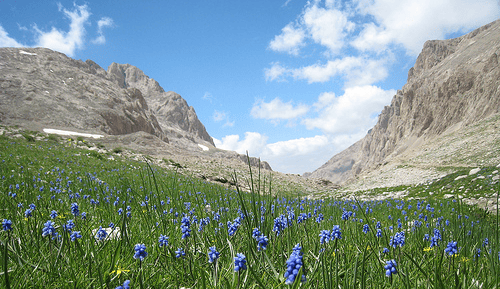In a paper published on Ecological modelling, a team of scientists (among them, CMCC researcher A. Trabucco from IAFES Division) focused on modelling the natural vegetation dynamics in the Taurus Mountains, Turkey, to reconstruct forest composition and biomass through time while investigating the past forest–society interactions in the territory.
The abstract of the paper:
To investigate the past forest–society interactions in the territory of the ancient city of Sagalassos, situated in the Taurus Mountains in Southwest Turkey, it is necessary to reconstruct forest composition and biomass through time. This paper focuses on modelling the natural vegetation dynamics in the area over the occurring gradient of biophysical site conditions under today’s climate, as a first and essential stepping-stone towards this goal. GREFOS, a forest gap dynamics model developed for the North-Eastern Mediterranean Basin, was adapted to the bioclimatic conditions of the Taurus Mountains, adding effects of late frost on species regeneration and adjusting the fire module. The model was parameterized based on an extensive literature review and additional field measurements for the seven most important tree species in the study area (Pinus brutia, Pinus nigra, Cedrus libani, Abies cilicica, Quercus cerris, Quercus coccifera and Juniperus excelsa) resulting in the most complete and documented ecological traits matrix presently available for the studied species. Qualitative and semi-quantitative model validation indicates that simulated species presence, altitude ranges and basal area estimates correspond reasonably well to field observations or expected values based on literature and expert knowledge. Yet validation results also indicate some inaccuracies for simulation of P. nigra and J. excelsa at higher altitudes. Simulations are summarized in a conceptual model with four vegetation zones, which reflects literature and expert opinion, and is interpretable in terms of ecological processes and succession dynamics in the study area. It is concluded that the resulting model is able to realistically predict effects of fire and abiotic site conditions on natural vegetation development in different climate zones in the Taurus mountains. Further model development steps should aim to include important additional drivers of vegetation composition, such as climate change and land use.
Read the integral version of the paper:
Kint V., Aertsen W., Fyllas N. M. , Trabucco A., Janssen E., Özkan K., Muys B.
Ecological traits of Mediterranean tree species as a basis for modeling forest dynamics in the Taurus mountains, Turkey
2014, Ecological Modeling, 286, 53-65




